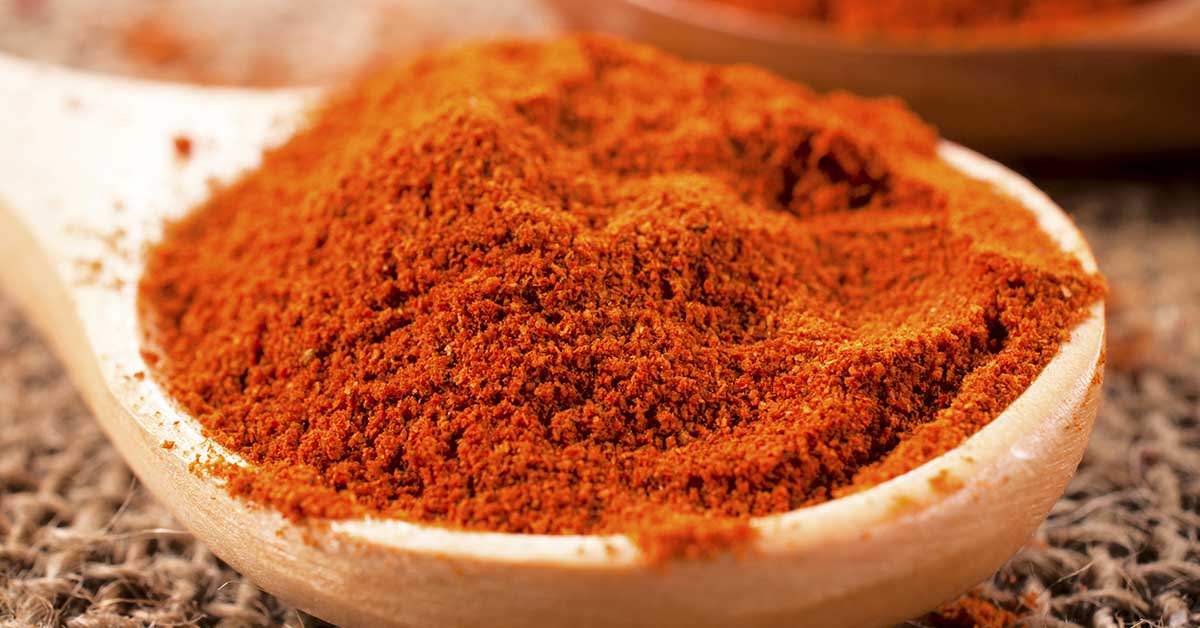Paprika, a spice widely used in kitchens worldwide, has recently become a topic of discussion as people uncover its true composition.1 Contrary to popular belief, paprika is made from dried sweet peppers that are carefully ground into a fine powder. In this article, we will delve into the origins of paprika, its production process, the varieties available, and its diverse culinary applications.
Origins and Characteristics of Paprika
Paprika, derived from the pods of Capsicum annuum, belongs to the nightshade family, Solanaceae.2 This annual shrub is native to tropical regions of the Western Hemisphere, including Mexico, Central America, South America, and the West Indies. Cultivated globally for its pods, commonly known as chili peppers or chilies, Capsicum annuum offers a wide range of sweet and pungent varieties. These peppers vary in size, shape, and color, ranging from 0.5 inch to 1 foot in length, with colors such as yellow, brown, purple, and red. Within the pepper, a spongy central column houses flat, kidney-shaped seeds.
The production process of paprika involves carefully selecting and drying sweet peppers before grinding them into a fine powder. To create milder paprikas, the central core of the pepper is removed prior to drying and grinding. Paprika’s sugar content varies depending on the variety, and it contains more vitamin C than citrus fruits. Its pungency is attributed to capsaicin, a nitrogen compound that is generally lower in Capsicum annuum compared to other plants within the same genus. The ground pods yield oleoresin of paprika, an extracted coloring agent used to give processed foods, meat, and sausage products a vibrant red hue.
Paprika Varieties and Usage
Hungarian paprika, renowned for its quality, comes in different variations. The rose paprika, considered the finest variety, is made from choice dark red pods and offers a sweet flavor and aroma. Another Hungarian variation, Koenigspaprika or king’s paprika, utilizes the entire pepper, resulting in a sharper taste. Hungarian cuisine, particularly dishes like gulyás, pörkölt, paprikás, and tokány, heavily relies on its flavorful presence.
Spanish paprika, on the other hand, tends to be milder than the Hungarian counterpart. It is categorized as “dulce” (sweet and mild), “agridulce” (bittersweet), or “picante” (hot). Additionally, smoked paprika, popularly used in Spanish cooking, is made by wood-smoking the peppers before grinding them into a powder. This variant, often labeled as “picante pimenton,” lends a distinct smoky flavor to dishes like Paella and adds depth to various culinary creations.3
Culinary Applications and Social Media Reactions
Paprika’s vibrant color and flavor make it a versatile seasoning in many cuisines worldwide. Its bright hue serves as an excellent garnish for light-colored, savory dishes, while its taste adds depth and complexity to a range of recipes. Hungarian cuisine relies on the it to create hot and spicy stews like gulyás (known as goulash in the United States), pörkölt, paprikás, and tokány. In Spanish, Mexican, and Balkan Peninsula cuisines, this spice plays a crucial role in enhancing the taste and visual appeal of numerous dishes.
Recent discussions on social media platforms, particularly Twitter, have shed light on the lack of knowledge about paprika’s composition. Many individuals were genuinely surprised to discover that this spicie is made from crushed red bell peppers. The revelation sparked engaging conversations and garnered significant attention, reflecting the widespread misconception surrounding the origins of this beloved spice.
Conclusion
Paprika, crafted from dried sweet peppers ground into a fine powder, offers a vibrant color and distinct flavor to culinary creations. With its rich history, diverse varieties, and widespread culinary applications, it remains a beloved spice in kitchens around the world. As social media reveals the gaps in our understanding, it’s important to appreciate the origins and characteristics of the spices we use, fostering a deeper connection with the flavors that grace our plates. So, the next time you reach for that container of paprika, remember the journey it took from a humble pepper to a beloved ingredient that adds depth and color to your favorite dishes.
Sources
- “People Are Having Their Minds Blown Over What Paprika Is Really Made From.” Delish. Louella Berryman. January 27, 2023.
- “paprika.” Britannica
- “Paprika.” BBC Good Food

